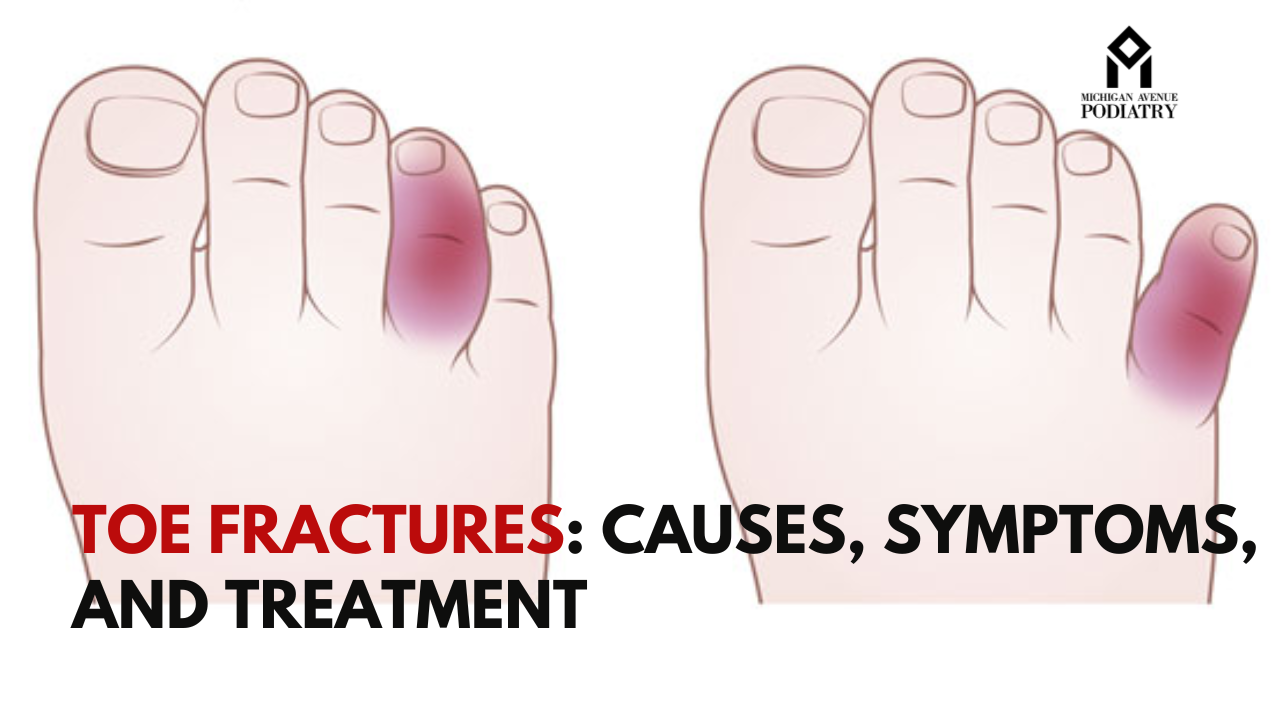Toe fractures, also known as broken toes, are common injuries that can result from various causes, including trauma, repetitive stress, or underlying medical conditions. While toe fractures may seem minor compared to other bone fractures, they can cause significant pain and discomfort, affecting mobility and daily activities. This article explores the causes, symptoms, and treatment options for toe fractures, emphasizing the importance of seeking timely medical attention for proper diagnosis and management.
Causes of Toe Fractures
Toe fractures can occur due to several factors, including:
Trauma
Direct trauma to the toe, such as stubbing it against a hard surface or dropping a heavy object on it, can cause fractures.
Repetitive Stress
Activities that involve repetitive movements or excessive pressure on the toes, such as running, dancing, or wearing ill-fitting shoes, can lead to stress fractures over time.
Sports Injuries
Participation in sports that involve rapid changes in direction or sudden impacts, such as soccer, basketball, or martial arts, can increase the risk of toe fractures.
Medical Conditions
Underlying medical conditions such as osteoporosis, arthritis, or neuropathy can weaken the bones and make them more susceptible to fractures.
Symptoms of Toe Fractures
The symptoms of a toe fracture may vary depending on the severity of the injury but commonly include:
- Pain: Sharp or throbbing pain in the affected toe, especially when bearing weight or moving it.
- Swelling: Swelling and inflammation around the injured area.
- Bruising: Discoloration or bruising of the skin due to internal bleeding.
- Difficulty Walking: Difficulty walking or bearing weight on the affected foot.
- Deformity: Visible deformity or misalignment of the toe, especially in severe fractures.
Diagnosis
To diagnose a toe fracture, a healthcare professional will perform a physical examination and may order diagnostic tests such as X-rays to assess the extent of the injury and determine the appropriate course of treatment.
Treatment Options
Treatment for toe fractures depends on the severity and location of the fracture but may include:
Immobilization
- Buddy Taping: Taping the injured toe to an adjacent toe for support and stability.
- Splinting: Using a splint or stiff-soled shoe to immobilize the toe and prevent further movement.
Rest and Elevation
- Rest: Avoiding activities that aggravate pain and allowing the toe to rest and heal.
- Elevation: Elevating the affected foot above the level of the heart to reduce swelling and promote circulation.
Pain Management
- Over-the-Counter Medications: Taking nonsteroidal anti-inflammatory drugs (NSAIDs) such as ibuprofen or acetaminophen to alleviate pain and inflammation.
Surgical Intervention
- Fracture Reduction: In severe cases or when the fracture is displaced, surgical intervention may be necessary to realign the bones and stabilize the toe with pins, screws, or plates.
- Foot and Ankle Surgery: Podiatrists specializing in foot and ankle surgery can perform procedures to repair complex fractures and restore function.
Physical Therapy
- Exercises: Performing gentle range-of-motion exercises and stretches to improve flexibility and strength once the toe has healed sufficiently.
Complications
Without proper treatment, toe fractures can lead to complications such as:
- Chronic Pain: Persistent pain and discomfort, especially with movement or weight-bearing.
- Malunion: Improper healing of the fracture resulting in misalignment or deformity of the toe.
- Delayed Healing: Prolonged healing time or nonunion of the fracture, requiring additional interventions.
Prevention
To reduce the risk of toe fractures, consider the following preventive measures:
- Wear Protective Footwear: Choose shoes that provide adequate support and cushioning to protect the toes from injury.
- Use Proper Technique: Practice proper technique and form in sports and activities to minimize the risk of trauma or repetitive stress injuries.
- Maintain Bone Health: Eat a balanced diet rich in calcium and vitamin D, and engage in weight-bearing exercises to maintain bone density and strength.
- Address Underlying Conditions: Manage underlying medical conditions that may weaken the bones and increase the risk of fractures.
Conclusion
Toe fractures can cause significant pain and discomfort, affecting mobility and quality of life. By understanding the causes, symptoms, and treatment options for toe fractures, individuals can take proactive steps to prevent injuries and seek timely medical attention from expert podiatrists when needed. Prompt diagnosis and appropriate management by healthcare professionals, including immobilization, pain management, and physical therapy, are essential for optimal recovery and prevention of complications.
FAQs
- How long does it take for a toe fracture to heal? The healing time for a toe fracture varies depending on the severity of the injury and the individual’s overall health, but it typically takes several weeks to a few months for the bone to heal completely.
- Can I walk with a fractured toe? In most cases, individuals can walk with a fractured toe, but they may experience pain and discomfort, especially when bearing weight on the affected foot. It is essential to use supportive footwear and avoid activities that exacerbate symptoms.
- Do I need surgery for a toe fracture? Surgery is rarely necessary for toe fractures unless the injury is severe or the fracture is displaced and requires realignment. Most toe fractures can be managed conservatively with immobilization and supportive care.
- Can I drive with a fractured toe? Driving with a fractured toe may be challenging, especially if the injury affects the ability to operate the pedals comfortably. It is advisable to avoid driving until pain and discomfort have subsided and mobility has improved.
- How can I prevent toe fractures? To reduce the risk of toe fractures, wear proper footwear, use protective equipment in sports, maintain bone health, and address any underlying medical conditions that may weaken the bones.




